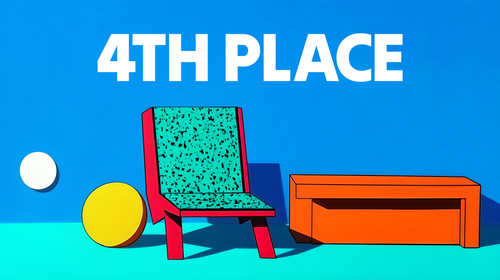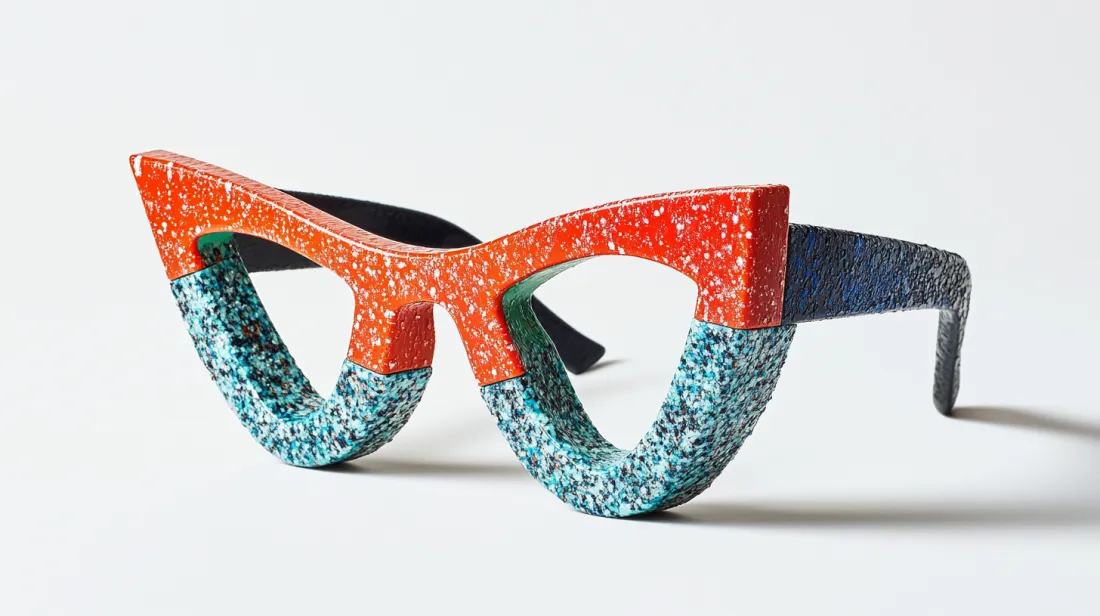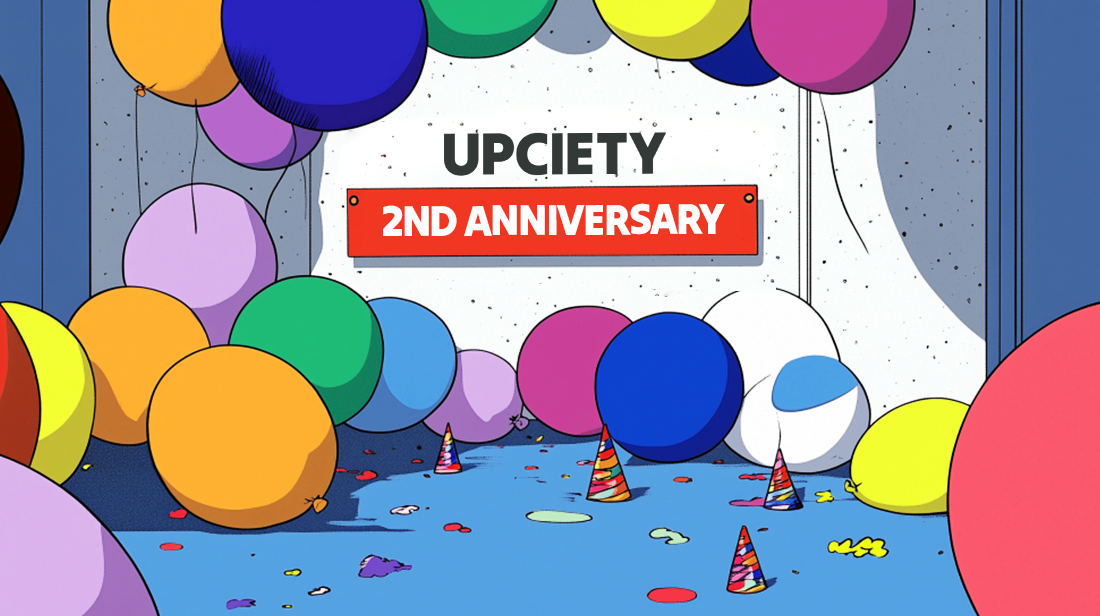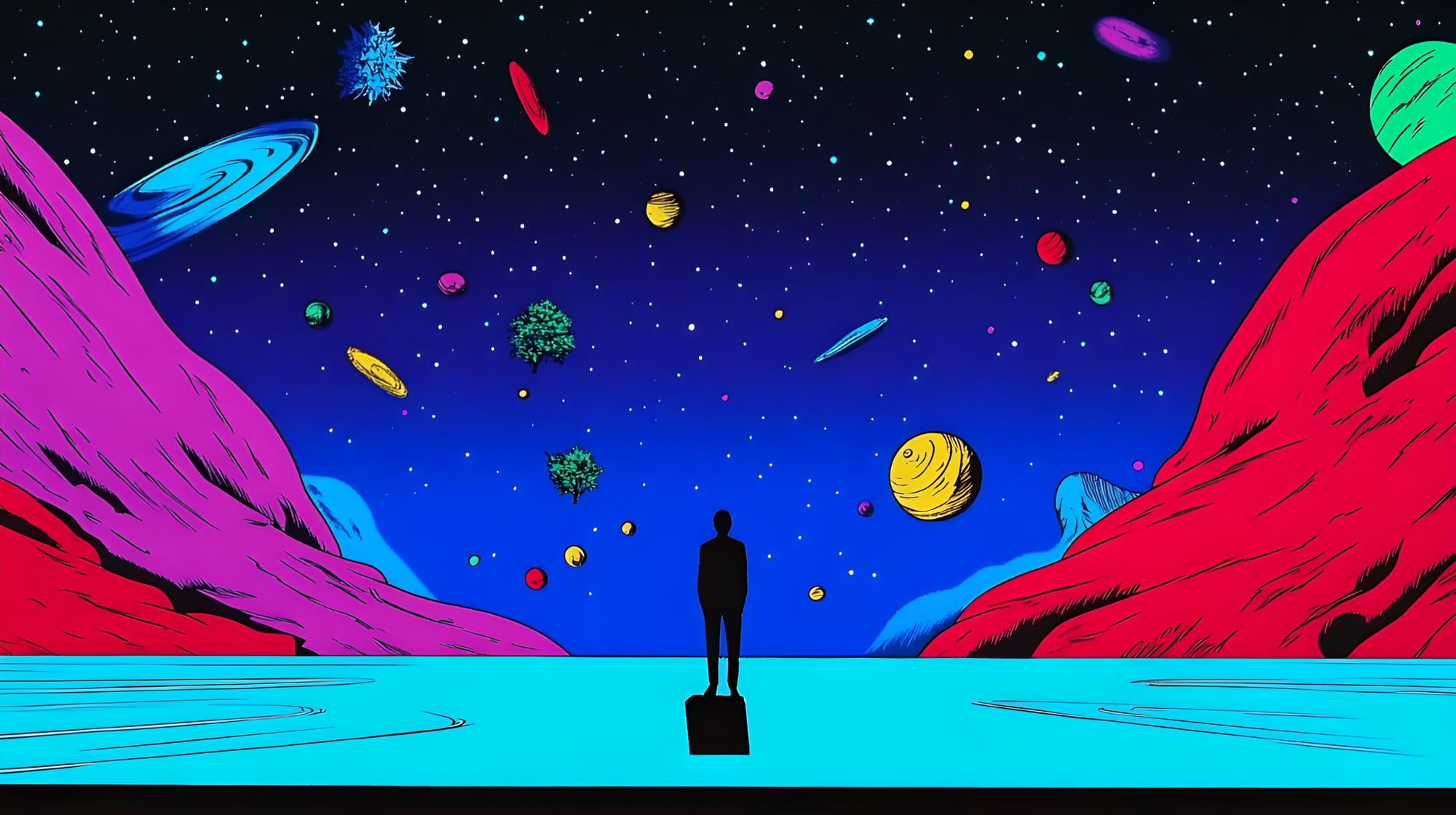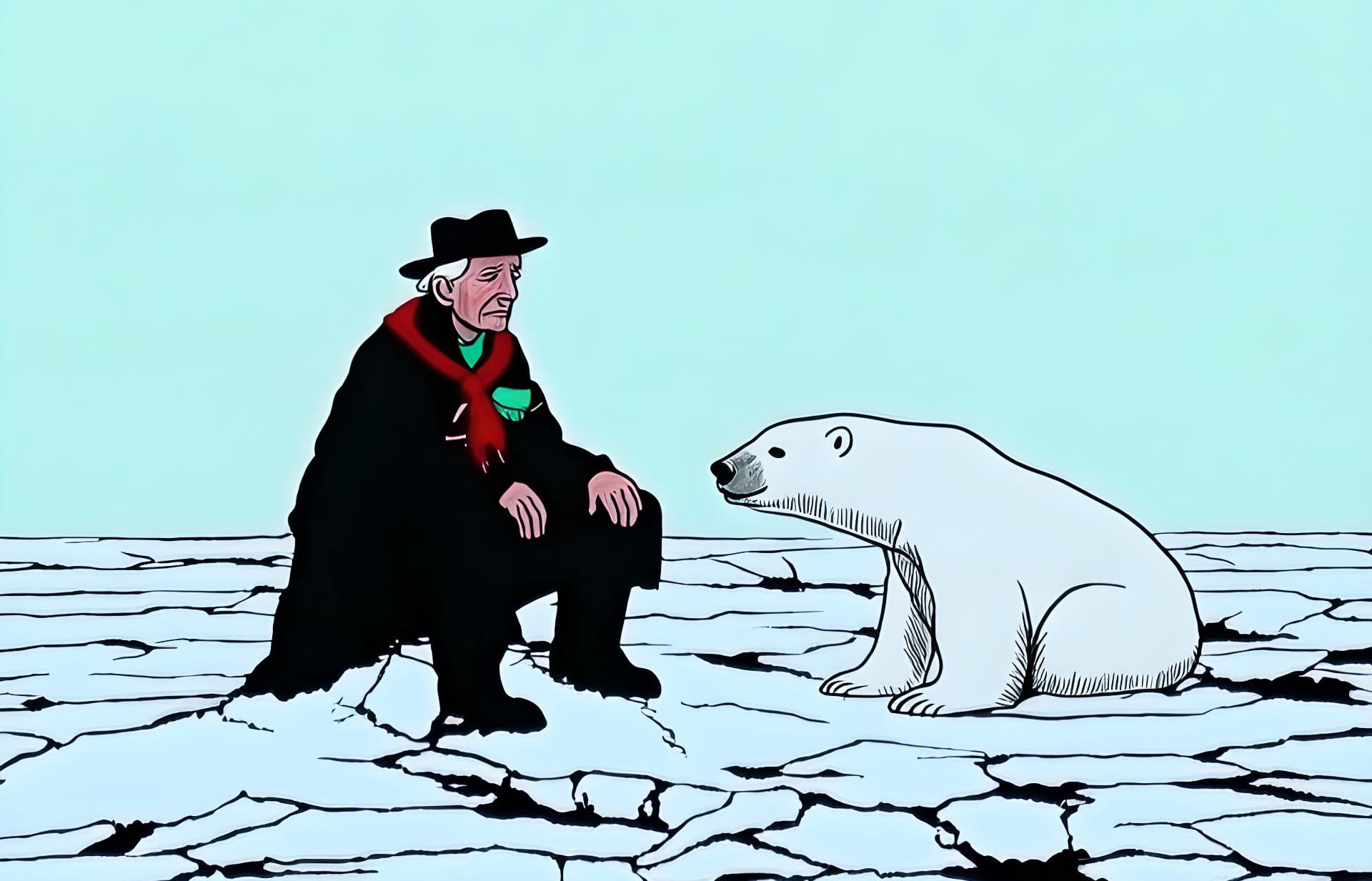A COLLECTIVE
A stands for Artist, AI and Activist.
MEN'S FIVE SKINS(1998)
- Activist Friedensreich Hundertwasser
- The information about MEN's FIVE SKINS of Hudertwasser in this post is based on hundert wasser official website. For more information please visit Hunderwasser official website : Official Website (Link)
Korean Description
훈데르트바서(Friedensreich Hundertwasser)는 독창적인 건축가이자 화가로, 자연과 인간, 환경의 조화를 중요하게 여겼습니다. 그는 인간 존재를 다섯 개의 피부(Skins)로 구분하며, 인간과 환경의 상호 연결성을 강조했습니다.
첫 번째 피부: 피부(표피)
훈더트바서는 각 개인이 자신의 창조 정신을 키우는 데 책임이 있다고 믿었습니다. 그는 사람들이 "새로운 문맹", 즉 창조할 수 없는 능력에 맞서 싸우도록 격려했습니다.
"우리의 진짜 문맹은 읽고 쓸 줄 모르는 것이 아니라 창조할 줄 모르는 것입니다. 아이들과 소위 원시인들과 소위 바보들은 획일화, 교육, 관습으로 영혼을 잃을 때까지 창조할 더 큰 지식을 가지고 있습니다."
첫 번째 피부인 표피가 끊임없이 성장하고 발달하는 것처럼 인간도 끊임 없이 변화하고 성장해야한다는 점에서 훈데르트바서의 첫번째 피부는 정체성, 즉 사람이 자신의 필요에 대한 권리를 상징합니다.
두 번째 피부: 의복
"옷은 예술처럼 영원합니다. 옷은 다시 예술이 되어야 하고, 그저 패션이 되어서는 안 됩니다. "
훈데르트 바서는 옷은 겉으로 입는 것만이 아닌, 옷이 사람을 만든다 생각했습니다. 만일 두 번째 피부인 옷이 병들거나, 획일화되거나, 인간과 맞지 않거나, 인간에게 적합하지 않다면, 인간, 즉 그 아래에 위치한 유기체도 병들게 될 것이라 주장했습니다.
오늘날 완제품 생산과 공장에서 만든 의류는 우리를 우리 자신의 옷에 대한 창의적인 디자인에서 점점 더 멀어지게 하고 있습니다.
세 번째 피부: 집
지난 수세기 동안 의복과 건물은 더 이상 자연과 개인의 요구에 부합하지 않는 방향으로 발전해 왔습니다.
훈데르트바서는 1967년 뮌헨과 1968년 비엔나에서 제3의 피부인 집의 권리에 대한 연설을 누드로 진행하는 퍼포먼스를 보인 바 있습니다. 그의 화가이자 인간으로서의 제1의 피부인 정체성 되찾고 제3의 피부(건축)를 옹호하기 위해 제2의 피부(옷)를 벗어던진 것이지요.
훈더트바서는 건축에서 기하학적 직선, 그리드 시스템, 합리주의에 반대하고, 사람이 자신의 집을 자유롭게 바꿀 수 있는 권리를 주장했습니다. 그는 대부분 건축에서 창의성과 상상력이 부족하다는 점에 대해 주저하지 않았습니다.
"내가 바깥을 보면 모든 것이 지배받고 T자 모양으로 비참하게 가득 차 있고 모두가 감옥에 갇혀 있습니다... 우리는 범죄적인 건물에 살고 있으며, 그 건물은 진짜 범죄자인 건축가가 지은 것입니다... 건축은 사람들이 이사하기 전까지는 성장해서는 안 되며, 그 반대도 아닙니다."
훈더트바서는 세입자를 위한 창문 권리, 고르지 않은 바닥, 녹색 지붕, 나무 세입자 및 자발적인 식물이 있는 전 세계 30개 이상의 건축 프로젝트를 실현했습니다. 건축가로서 훈더트바서는 단조로움보다 다양성을 중시했으며, 각 개인이 집을 바꾸고 창의성을 표현할 권리가 있다고 믿었습니다.
네 번째 피부: 정체성
우리의 정체성은 서로 다르다는 데 기반을 두고 있습니다. 훈더트바서에게 정체성은 중요한 특성이었습니다. 각 인간은 특정 그룹이나 국가와 동일시합니다. 훈더트바서는 오스트리아와 다른 국가의 우표, 뉴질랜드, 호주, 동티모르의 국기, 유대인과 아랍인 간의 화해를 상징하는 국기를 디자인하는 등 많은 독특한 정체성 표시를 만들었습니다.
이러한 창작물들은 그의 그림만큼이나 다채롭고 개성적이었습니다. 그는 예술적, 정치적, 사회적 표준화에 대한 항의를 표현함으로써 다른 사람들에게 영감을 주고자 했습니다.
다섯 번째 피부: 지구
"우리는 자연과 평화조약을 맺어야 합니다."
훈더트바서는 자연이 인간이 의지하는 유일한 우월한 창조력이라고 믿었습니다. 그는 자연 환경을 보존하고 자연의 법칙과 조화를 이루는 삶을 장려하기 위해 핵 에너지 반대, 바다와 고래 보호, 도시의 나무 심기와 조림, 열대 우림 보호, 개인 차량 대신 대중교통 이용 등 많은 생태적 문제에 대해 캠페인을 벌였습니다.
훈더트바서의 베이 오브 아일랜즈 부지는 그가 자연과 조화를 이루며 사는 것에 대한 많은 아이디어를 실천에 옮긴 곳 중 하나였습니다. 그는 수천 그루의 나무를 심고, 잔디 지붕이 있는 집을 짓고, 부식질 변기를 사용하고, 태양광 패널을 설치하고, 수생 식물을 사용하여 물을 정화하는 시스템을 개선했습니다.
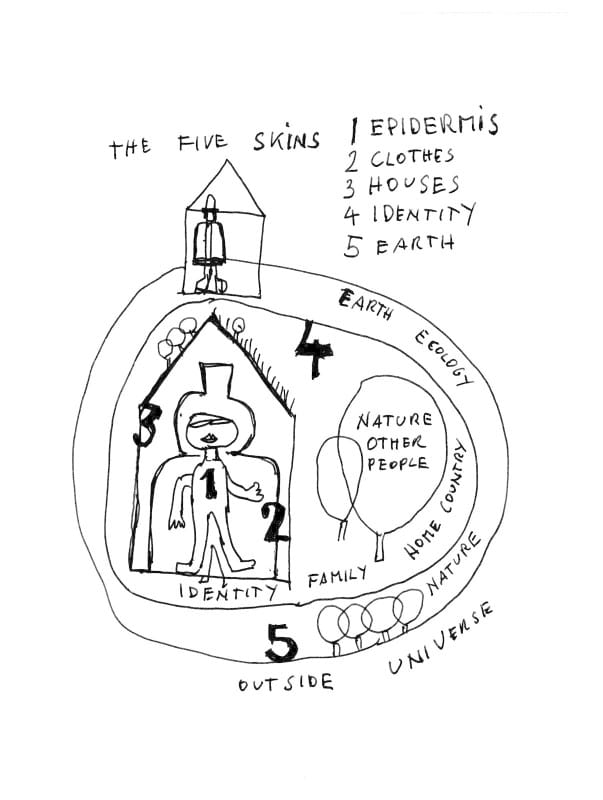
For Hundertwasser, man has three skins: his natural epidermis, his clothes, his house. When in 1967 and 1968 the artist delivered his naked address to proclaim man’s right to his third skin (the free alteration of his house), he accomplished the ritual full cycle of his spiral.
He re-found his first skin, that of his original truth, his nakedness as a man and painter, by stripping off his second skin (his clothes) to proclaim the right to his third skin (his home). Later, after 1972, when the major ideological turning-point had been passed, the spiral of Hundertwasser’s chief concerns began to unfold. His consciousness of being was enriched by new questions, which called for fresh responses and elicited new commitments.
So appeared the new skins that were to be added to the concentric envelopment of the three previous ones. Man’s fourth skin is the social environment (of family and nation, via the elective affinities of friendship). The fifth skin is the planetary skin, directly concerned with the fate of the biosphere, the quality of the air we breathe, and the state of the earth’s crust that shelters and feeds us.
The first skin: Epidermis
Hundertwasser believed each individual was responsible for nurturing their creative spirit. He encouraged people to fight the “new illiteracy” — the inability to create.
The first skin – the epidermis – goes through constant change and growth, just as human beings undergo constant growth and development. The first skin symbolises identity, a person’s right to her or his own needs.
Commenting on his Japanese woodcut ‘Right to Create’, Hundertwasser said
"Our real illiteracy is not the incapability to read and write but the incapability to create. The children and the so-called primitives and the so-called fools have a bigger knowledge to create until they lose their soul by uniformation, education and convention."
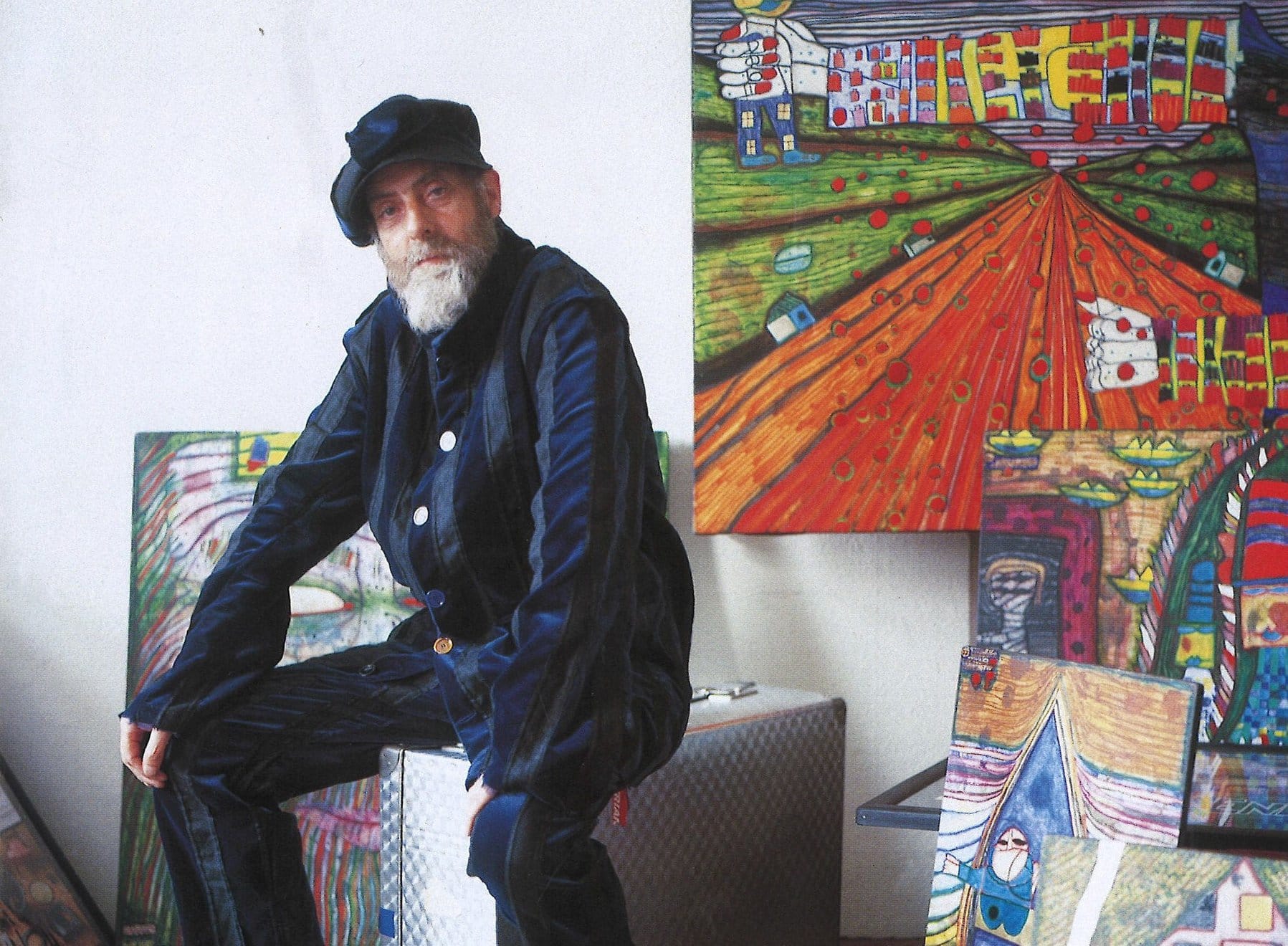
The second skin: Clothes
Clothing is forever, just like art. Clothing must become art again and stop being just fashion.
In 1949, Hundertwasser was travelling through Italy when he met the French artist René Brô, who amazed him with his peculiar clothing style. Inspired, Hundertwasser began making trousers and shoes for himself; later he designed clothes and caps to be sewn, and pullovers and socks knitted. He became a forerunner of the Creative Clothings Movement.
In 1982 the French edition of Vogue invited Hundertwasser to design a suit and write about fashion for the magazine. He summarised his ideas in the manifesto “On the Second Skin” (1982/1983), where he railed against conformity, fashion and clothing that’s anonymous, average and symmetrical.
If the Second Skin is taken ill or is made uniform or is not in keeping with man, doesn’t befit man, then man, i. e., the organism situated beneath it, will also get sick. And that is one of the main reasons why our civilisation today is sick...
Finished-part production and factory-made garments are removing us farther and farther from the creative design of our own clothing, which is not just something which one wears on the outside. For clothes make the man. That is not just a proverb, that’s a fact, the truth.
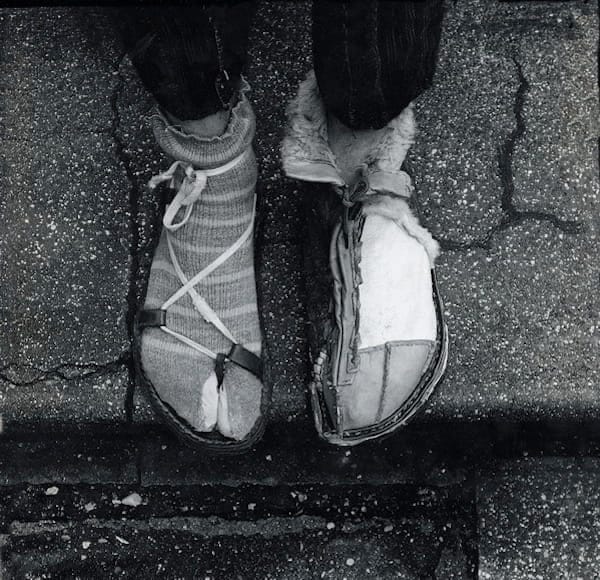
The Third Skin: Houses
Clothing and buildings have undergone a development in the past centuries that no longer correspond to nature and the needs of the individual.
When Hundertwasser delivered his Speeches in the nude for the Right to a Third Skin in Munich in 1967 and Vienna in 1968, these were seminal moments. He had shed his Second Skin (his clothes) to reclaim his original truth as a painter and man (his First Skin) and advocate for the Third Skin (architecture).
Hundertwasser was protesting against the geometrical straight line, the grid system and rationalism in architecture, and for a person’s right to freely alter their own house. He didn’t hold back when it came to the lack of creativity and imagination in most architecture.
When I look outside, I see that everything is full of ruled and T-squared misery and everybody is imprisoned… We live in buildings which are criminal and which were built by architects who are really criminals… Architecture should not start growing until people move in and not vice versa.
Hundertwasser realised more than 30 architectural projects around the world in which there are window rights for the tenants, uneven floors, green roofs, tree tenants and spontaneous vegetation. As an architect, Hundertwasser put diversity before monotony, believing in each individual’s right to alter their homes and express their creativity.
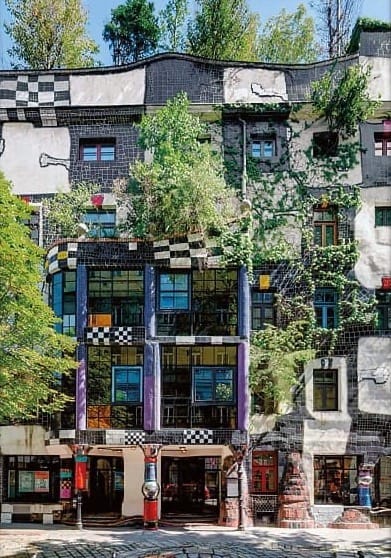
The fourth Skin: Identity
Our identities are based on differing from each other. Identity for Hundertwasser was an important quality. Each human being is identifying with a specific group or nation. Hundertwasser created many distinctive signs of identity, designing stamps for Austria and other countries, and flags for New Zealand, Australia and East Timor, as well as a flag to symbolise reconciliation between the Jewish and Arab peoples.
These creations were just as colourful and individual as his paintings. By expressing his protest against artistic, political and social standardisation, he hoped to inspire others.
Humanity
Man has the right and duty to be reborn and to endure on this Earth through his own waste. A society without waste has transformed death into life by restoring the cycle. Death is transformed into life through humus toilets producing humus, natural water-purifying plants producing clean water, and natural burial rites whereby the deceased ascend into trees planted in cemeteries.This also signifies the restoration of agriculture and all human activity, free of toxins, destruction, and monocultures. Every civilization can only survive as long as humus exists. Egypt, Greece, Rome, and other civilizations perished when their humus was exhausted. Our civilization will decay if we fail to restore our humus.
The fifth Skin: Earth
We must make a peace treaty with nature.
Hundertwasser believed that nature is the only superior creative power on which humanity depends. His respect for nature aroused in him the desire to protect it against the attacks made on it by people. This is the fifth skin: ecology and mankind.
At a time when the green movement was first coming into being, he went to work on the preservation of our natural surroundings, promoting a life in harmony with the laws of nature. He campaigned on many ecological issues: against nuclear energy, for the saving of oceans and whales, for tree planting and afforestation of the cities, for rainforest protection, and for using public transport instead of private cars, and more.
Hundertwasser’s property in the Bay of Islands was one of the places where he put many of his ideas about living in harmony with nature into practice. He planted thousands of trees, had houses with grass roofs, used the humus toilet, had solar panels and refined his system of purifying water using aquatic plants.
If man walks in nature’s midst, then he is nature’s guest and must learn to behave as a well-brought-up guest.
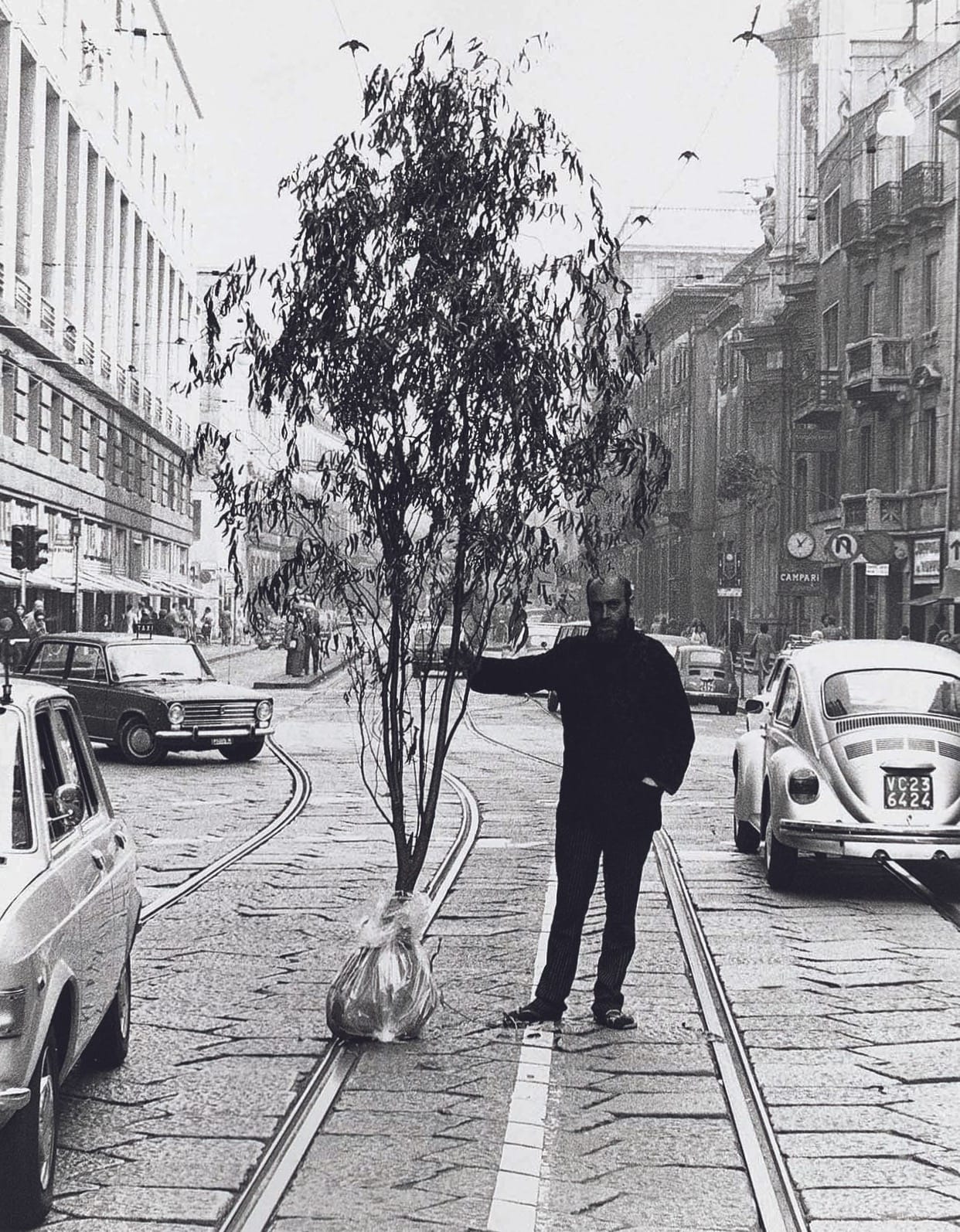
(Hundertwasser in a 1976 interview with art critic and author Pierre Restany.)


